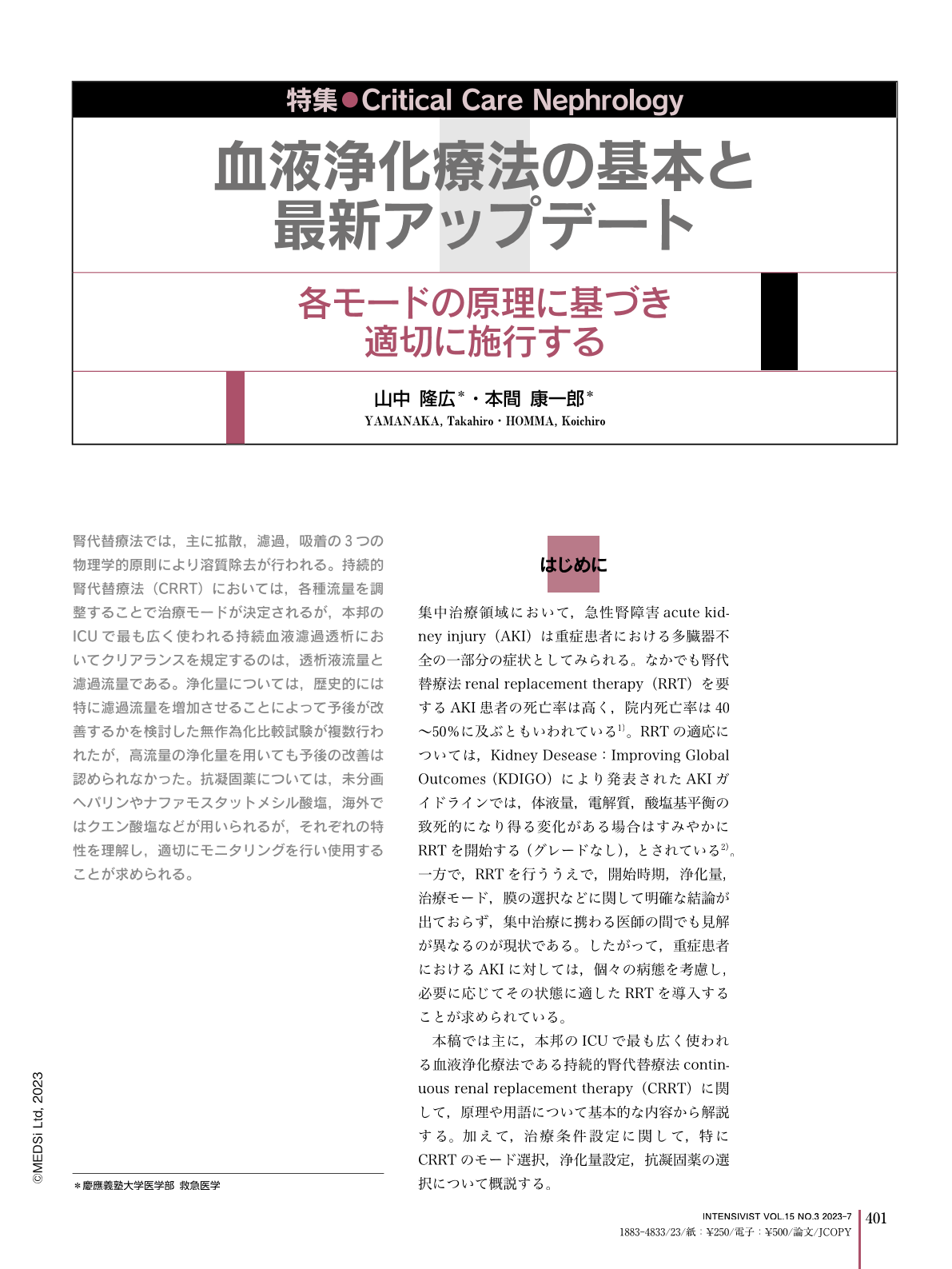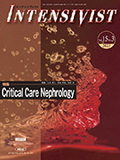Japanese
English
- 有料閲覧
- Abstract 文献概要
- 1ページ目 Look Inside
- 参考文献 Reference
腎代替療法では,主に拡散,濾過,吸着の3つの物理学的原則により溶質除去が行われる。持続的腎代替療法(CRRT)においては,各種流量を調整することで治療モードが決定されるが,本邦のICUで最も広く使われる持続血液濾過透析においてクリアランスを規定するのは,透析液流量と濾過流量である。浄化量については,歴史的には特に濾過流量を増加させることによって予後が改善するかを検討した無作為化比較試験が複数行われたが,高流量の浄化量を用いても予後の改善は認められなかった。抗凝固薬については,未分画ヘパリンやナファモスタットメシル酸塩,海外ではクエン酸塩などが用いられるが,それぞれの特性を理解し,適切にモニタリングを行い使用することが求められる。
Mortality is high in patients with acute kidney injury who require renal replacement therapy. In renal replacement therapy, solute removal is achieved mainly by three physical principles:diffusion, filtration, and adsorption. In continuous renal replacement therapy, the mode of treatment is determined by adjusting various flow rates. It is the dialysate flow rate and filtration flow rate that define clearance in continuous hemodiafiltration dialysis, the most widely used intensive care unit in Japan. With regard to purification volume, historically, several randomized controlled trials have examined whether an increase in filtration volume, in particular, improves prognosis, but no improvement in prognosis was observed even with higher purification volume doses. The amount of blood purification regulated by the current Japanese insurance is considerably less than overseas, and it is not known whether the amount of blood purification in Japan is sufficient. Regarding anticoagulants, unfractionated heparin, nafamostat mesylate, and overseas citrate are used, and their characteristics must be understood and properly monitored and used. There is no fundamental cure for acute kidney injury, and renal replacement therapy as supportive care is the only effective means of assisting renal function, and must be performed based on a correct understanding of its principles.

Copyright © 2023, MEDICAL SCIENCES INTERNATIONAL, LTD. All rights reserved.


